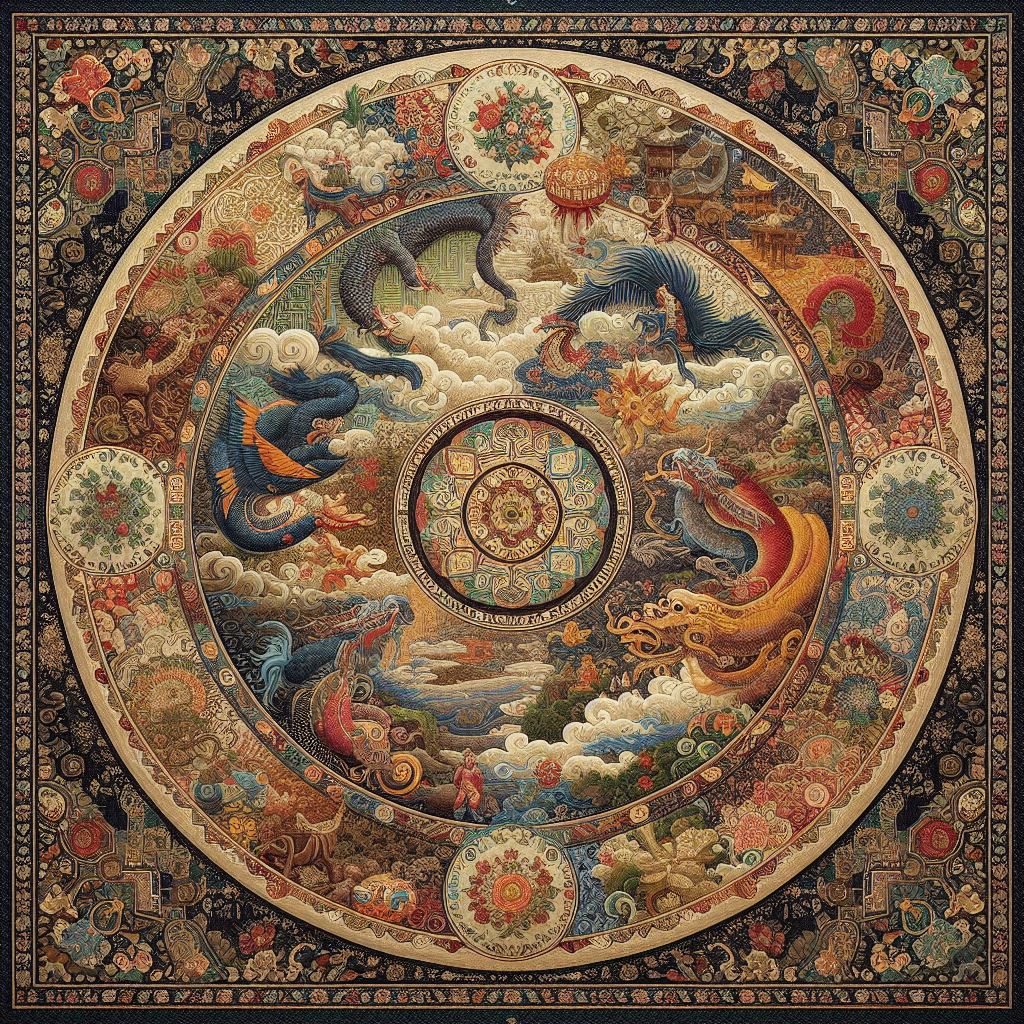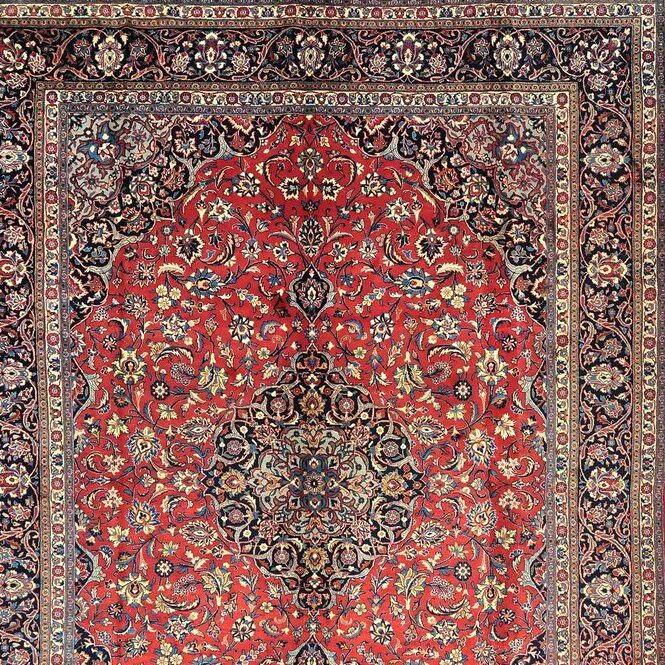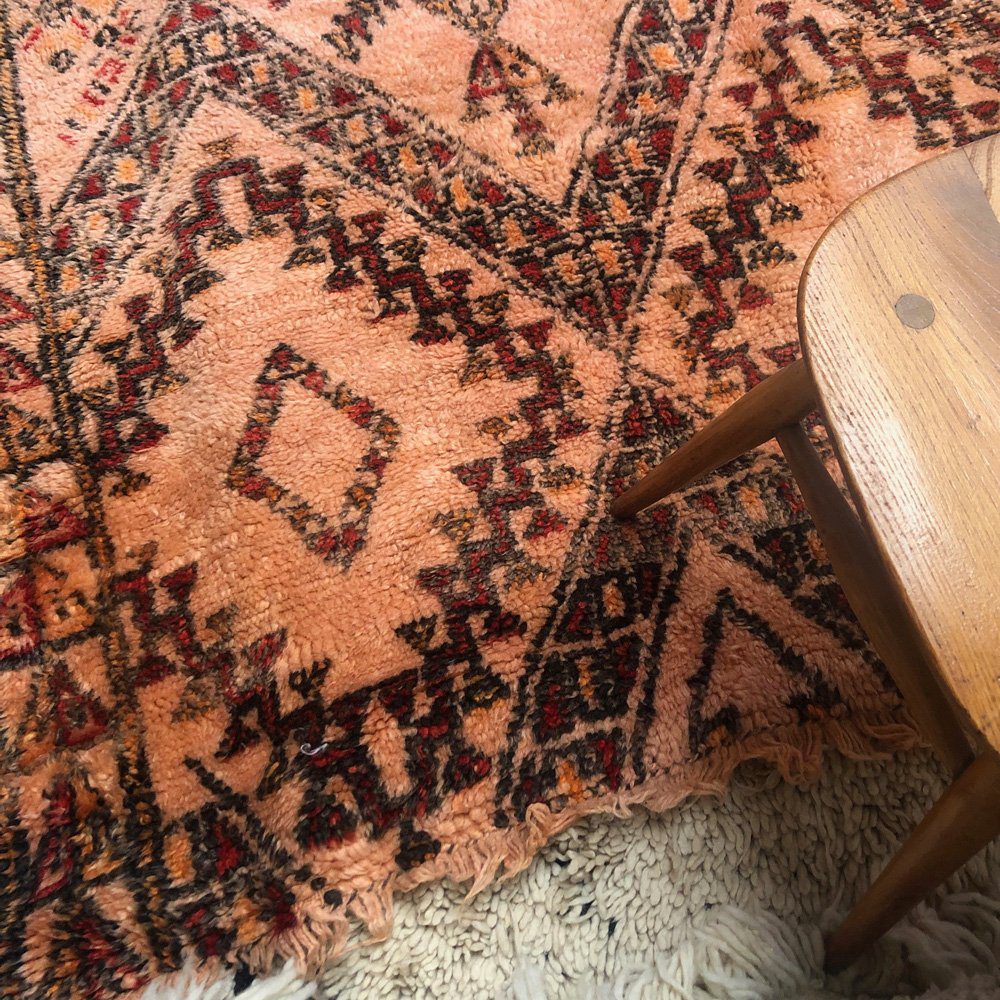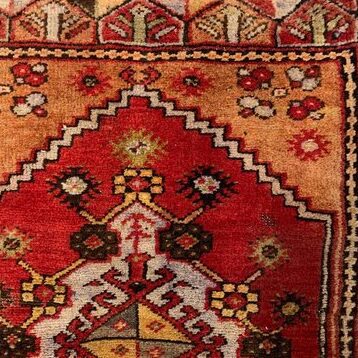Explore Chinese Rugs: Tradition & Elegance
The Rich History and Origin of Chinese Rugs
Ancient Beginnings and Cultural Significance
Chinese rugs, renowned for their exquisite beauty and craftsmanship, have a storied history that dates back thousands of years. Originating during the Han Dynasty, these rugs were not only decorative items but also held significant cultural importance. As symbols of status and wealth, they adorned the homes of the affluent and the palaces of emperors. Intricately designed, these rugs often featured traditional Chinese motifs such as dragons, phoenixes, and other mythological creatures, each symbolizing different virtues and aspects of life.
Over the centuries, Chinese rug making evolved, incorporating various techniques and materials, including the famed Chinese wool. The art of rug making was often passed down through generations, with each region developing its unique style and patterns. This historical evolution contributed to the diversity we see in Chinese rugs today, ranging from the plush, luxurious textures of Chinese wool rugs to the distinct patterns of traditional carpets.
Identifying Genuine Chinese Rugs: A Guide
Materials and Design Patterns
Identifying an authentic Chinese rug involves understanding its material composition and design elements. Traditional Chinese rugs are primarily made from high-quality wool, known for its durability and softness. The wool's unique texture gives these rugs a distinct feel, differentiating them from others. Design-wise, genuine Chinese rugs often feature intricate patterns and vibrant colors, reflecting the rich cultural heritage of the region. Notable designs include symbolic motifs like lotus flowers, which represent purity and renewal, and the classic 'shou' symbol, signifying longevity.
Vintage Chinese rugs, another coveted category, are distinguished by their age and patina. These rugs often bear signs of wear, but this does not diminish their value; rather, it adds to their historical significance. Collectors and enthusiasts prize these vintage pieces for their historical connection and the stories they tell about the eras they come from. Recognizing these rugs requires an eye for detail and an understanding of the historical context behind their creation.
Styles and Varieties of Chinese Rugs

Chinese Wool Rugs and Their Unique Appeal
Chinese wool rugs, recognized for their exceptional quality and durability, are a testament to the skill and artistry of Chinese weavers. These rugs are typically made from high-grade wool, which lends them a luxurious softness and a lustrous sheen. The wool's natural resilience makes these rugs highly durable, capable of withstanding years of use without losing their charm. Chinese wool rugs are available in a variety of designs, ranging from traditional motifs that reflect China's rich cultural heritage to more contemporary patterns that suit modern aesthetics.
In addition to wool, other materials such as silk are sometimes incorporated to add extra finesse and detail. The inclusion of silk allows for finer, more intricate designs and a higher knot count, resulting in rugs of exceptional quality and detail. These pieces often feature vibrant colors and elaborate patterns, making them not only a functional item for the home but also a piece of art.
Maintenance and Care of Chinese Rugs
Preserving the Beauty of Chinese Rugs
Proper maintenance and care are crucial for preserving the beauty and extending the life of Chinese rugs. Regular cleaning is essential, but it's important to use the right techniques to avoid damaging these delicate pieces. To clean a Chinese rug, it's recommended to use gentle, non-abrasive cleaning agents and avoid harsh chemicals. Regular vacuuming can help remove dirt and dust, but for deeper cleaning, professional rug cleaning services are often the best choice.
When it comes to vintage Chinese rugs, extra care is needed due to their age and value. These rugs should be handled with utmost care, and any cleaning or repairs should be done by professionals who specialize in antique rugs. Proper storage is also important for vintage rugs, especially if they're not being displayed. They should be stored in a cool, dry place, away from direct sunlight and moisture, to prevent fading and mould growth.
Joe Rugs - Carpet Expert
Hello! I'm Joseph Rugs, the founder of CarpetJoe.com and your guide through the intricate world of carpets. Born and raised in London with a deep-rooted passion for art and culture, I've explored the globe to bring the rich tapestry of carpet weaving right to your screen. My academic background in arts and humanities from Oxford has fuelled my curiosity, leading me to uncover the stories behind every knot and weave. As a family man, my adventures are shared with my loved ones, enriching our lives with every piece of art we encounter. Join me as we explore the beauty and craftsmanship of carpets together.
Common Types or Rugs
Each type of Oriental rug has its unique charm and story, making them more than just a luxury item; they are a piece of their country's cultural legacy. Collectors and enthusiasts of Oriental and Persian rugs appreciate them not only for their aesthetic appeal but also for their cultural, historical, and artistic significance.

Persian Rugs
Originating from what is now modern-day Iran, Persian rugs are celebrated for their unparalleled craftsmanship and enduring beauty.

Berber Rugs
Originating from the Berber tribes of North Africa, particularly Morocco, this type of carpet is renowned for its rugged texture and resilient nature.

Turkish Rugs
Turkish rugs have a legacy steeped in history and artistry, and have always been a symbol of exquisite craftsmanship and cultural significance.
Frequently Asked Questions
Cleaning Chinese rugs requires a gentle approach to maintain their beauty and integrity. It's advisable to vacuum them regularly with a brushless suction head to remove surface dirt and dust.
For deeper cleaning, use mild, rug-safe detergents and soft brushes or sponges. Avoid soaking the rug as excessive water can damage the fibres. For stubborn stains or overall cleaning, it’s best to consult professional rug cleaners who are experienced in handling delicate, antique, or handcrafted rugs.
Identifying a Chinese rug involves examining its design, colour scheme, and materials. Chinese rugs often feature traditional motifs such as dragons, lotus flowers, and birds, in a predominantly blue, beige, and rose colour palette.
They are typically made from high-quality wool or silk and may include intricate patterns and symbols. The knotting technique can also be a giveaway; Chinese knots are usually less dense compared to Persian rugs.
The invention of rugs cannot be attributed to a single country, as various forms of rug-making have been found in different cultures worldwide.
However, some of the earliest known rugs were discovered in present-day Iran, suggesting that the regions of Persia and Central Asia played a significant role in the early development of rug-making techniques.
The oldest known rugs in the world are the Pazyryk rugs, dating back to the 5th century BCE.
These rugs were discovered in Siberia and are renowned for their intricate designs and advanced weaving techniques for the time. Their remarkable preservation gives us valuable insight into early rug-making practices.
Persia (modern-day Iran) is the most famous country for rugs. Persian rugs are celebrated globally for their intricate designs, rich history, and skilled craftsmanship.
They are considered the epitome of rug making and are highly sought after by collectors and enthusiasts.
The main differences between Persian and Turkish rugs lie in their origin, design, materials, and knotting techniques. Persian rugs are from Iran and often feature intricate floral motifs with silk inlays, while Turkish rugs are from Turkey, known for geometric patterns and tribal designs.


